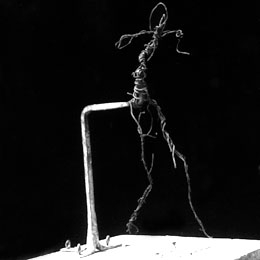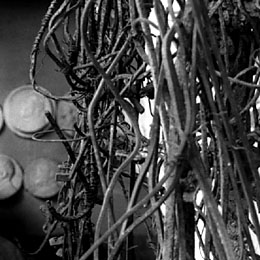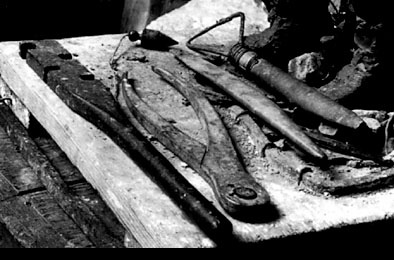Modelling
Bouchard was above all a modeller.
For him, cutting directly into stone without a pre-worked model was a process that took too long, paralysed the research and allowed no going back. On the contrary, modelling in clay gave him much more freedom.
Low-relief:

The support:
Working with quite wet clay making it very malleable, Bouchard always started by constructing a support.A large vertical wooden panel spiked with numerous large headed nails allowed him to maintain an expanse of clay, about 30cm in depth, in a vertical position.
Small wooden crosspieces, "butterflies", incorporated into the layer of clay contributed to its stabilising.
This "nail-spiked" panel mounted on large wooden wheels was moveable.
An axle allowed it to swivel into positions whereby low-angled lighting revealed in detail the work in hand.
Ronde-bosse (in the round):
For the clay to be malleable it must be very soft.
It is necessary to construct an armature to hold it in position. Thick or thin metal wire is used for small subjects and large diameter wire, or rods, for large-scale statues.


This skeleton armature, which serves to support the mass of clay to be modelled, is attached by a metal bracket that is in turn fixed to a wooden plinth.
To prevent the clay from slipping, he winds finer metal wires around the larger ones.
The tools for modelling
The clay is maintained in a soft humid state. Thus the sculptor does not need to use strong tools.

He uses his fingers a great deal and spatulas, spring-adjusting callipers, wire-loops, "cheese cutting" wire.


